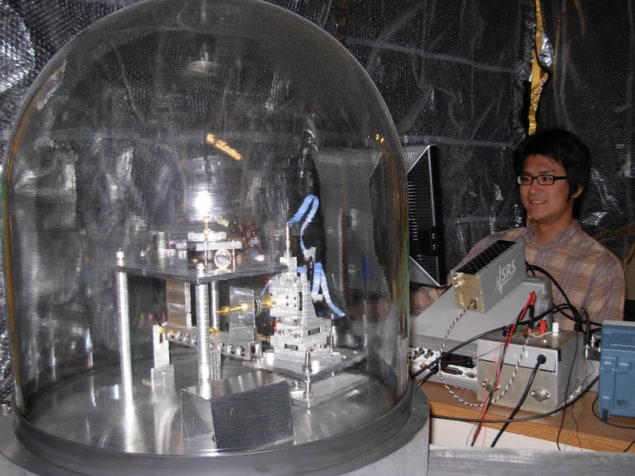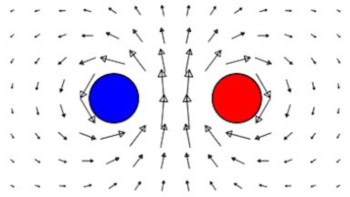
The thermal Casimir force – whereby two objects feel an attraction caused by thermal fluctuations of the electromagnetic field – has been measured for the first time by physicists in the US. The tiny attractive force was detected between two gold surfaces separated by at least 3 µm. This is too far apart to have been due to the more familiar Casimir force that arises from quantum zero-point fluctuations.
The Casimir force owes its name to the Dutch physicist Hendrik Casimir, who in 1948 worked out that two uncharged, perfectly conducting metal plates placed in a vacuum should be attracted to one another. This force arises from the fact that the energy of an electromagnetic field in a vacuum is not zero but continuously fluctuates around a certain mean value, known as the “zero-point energy”.
Casimir showed that the radiation pressure of the field outside the plates is slightly greater than that between the plates. As a result, the plates will experience an attractive force. Being so small, the force proved extremely difficult to measure and it was not until 1997 that Steve Lamoreaux at the University of Washington in the US provided firm experimental confirmation of Casimir’s theory.
Whereas zero-point fluctuations occur at temperatures right down to absolute zero, an electromagnetic field also experiences an increasing number of thermal fluctuations at higher temperatures. In 1955 the Russian physicist Evgeny Lifshitz predicted that these fluctuations should have a similar effect on radiation pressure, leading to a thermal Casimir force.
Gold-plated finding
Now at Yale University, Lamoreaux has teamed up with Alexander Sushkov and colleagues to measure the thermal Casimir force for the first time. Instead of using two parallel plates, the team looked for the force between a gold-coated plate and a sphere. This is the favoured method of measuring the Casimir force because aligning a sphere and plate is much easier than having to precisely line up two parallel plates.
Lamoreaux and colleagues mounted the flat surface on a horizontal beam suspended from its centre by a wire to create a torsion pendulum. The sphere was brought up slowly to the plate and, as a result of the Casimir force, the pendulum twisted towards the sphere. The team then measured the electrostatic force that had to be applied to the other half of the pendulum to balance the beam as the sphere was slowly moved from 7 to 0.7 µm from the plate and then back again.
After correcting for the residual electrostatic forces between sphere and plate, due to imperfections in the gold surfaces, Sushkov and colleagues found that the zero-point Casimir force dominated, as expected, at separations of less than about 3 µm. However, at greater distances, where the zero-point force is expected to drop off rapidly with the inverse cube of the separation, the team measured a force that fell more slowly with the inverse square of the separation.
Drude model wins out
The team then compared its data to Lifshitz’s theoretical prediction using two models for the low-frequency dispersion of the dielectric constant of the gold surfaces: the Drude model and the plasma model. “While both models predict an inverse square force, the experiment appears to be best described by the Drude model,” explains Sushkov.
Thomas Philbin of the University of St Andrew’s in the UK describes the experiment as “very interesting and important”, adding that the main significance of the work is that it verifies the prediction by Lifshitz in 1955 of the existence of the thermal Casimir force. “It also tests our understanding of the electromagnetic properties of metals at low frequencies,” he says.
The Yale team is now planning to measure thermal Casimir forces between other materials including semiconductors.
The work is described in Nature Physics DOI: 10.1038/NPHYS1909.



